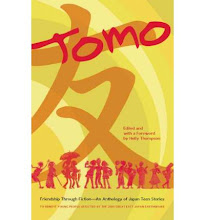Every once in a while, my town will bring some group to the Wa Wa Wa Domu- our community centre- and take kids from all 9 schools to see them.
Last week, we had one such opportunity with an ensemble made up native Asian instruments. I was thrilled. I kept thinking it was the coolest thing ever. The kids were mostly bored. I guess while it's "Oooo, look at the cool Chinese and Mongolese intruments!" for me, it's "Man, the stupid town always making me sit through these boring things" for them. Perception is a helluva thing.
Here's a quick introduction of the instruments:
The Niko. (Chinese: erhu. Western: Chinese Violin. )
Since "ni" means two in Japanese, I'm tempted to believe that "ko" means strings. Looking it up, it seems to refer to the Barbarian tribes from the outskirts of China. As the name suggests, it has two strings. It's a relative of the violin, and is played with a bow. Unlike a violin the soft part of the bow passes on the INSIDE of the strings. The strings are between the stick part and the soft part of the bow!
It has a high-pitched sound and can't make low notes. by pinching the bow at the very base of the strings, it makes a sound like a chirping bird. There's a hole at the back for the sound to come out.
The lady on the left is playing the niko. She's one of those crazy musicians who has all these off-the-wall facial expressions and tosses her head around so much you swear it will come off.
2. The biwa. (Chinese: pipa. Western: Chinese Lute.)
The guy on the right is playing the biwa. It has 4 strings and a gazillion frets- the little pieces of wood that run perpendicular to the strings. Both the way the biwa is played and the way it sounds are more similar to the harp than the guitar, in my opinion. As you can see, it's held upright.
3. The batoukin. (Mongolian: Morin Khuur.)
This instrument is designated one of the Masterpieces of the Oral and Intangible Heritage of Humanity. It looks like it has only 2 strings, but it's really a bunch of strings that look like one- up to 140 strings.
It's deeper than the niko and sounds somewhat like a violin, but not as mournful. It's a Mongolian instrument, and the imstrumentalist was also Mongolian. Batoukin means "horse head lute".
The guy with the biwa asked the kids to become "国際人" (Kokusaijin). It means "citizen of the world." I was so happy, because Japan can be very isolated sometimes. Here's the full ensemble. From left to right: The Japanese pianist, the Chinese niko player, the Chinese biwa player,and the Monogolian batoukin player.
The Mongolian dude looked up in his intro and said the building reminded him of home. There's a giant dome on top of the centre- that's why they call it the "Domu". He said the one's at home were skylights though. Then lo and behold, they opened the roof! I've been here three years and I've never know the roof could open. They must just never bother.
Remnants and Revelations
6 years ago















No comments:
Post a Comment